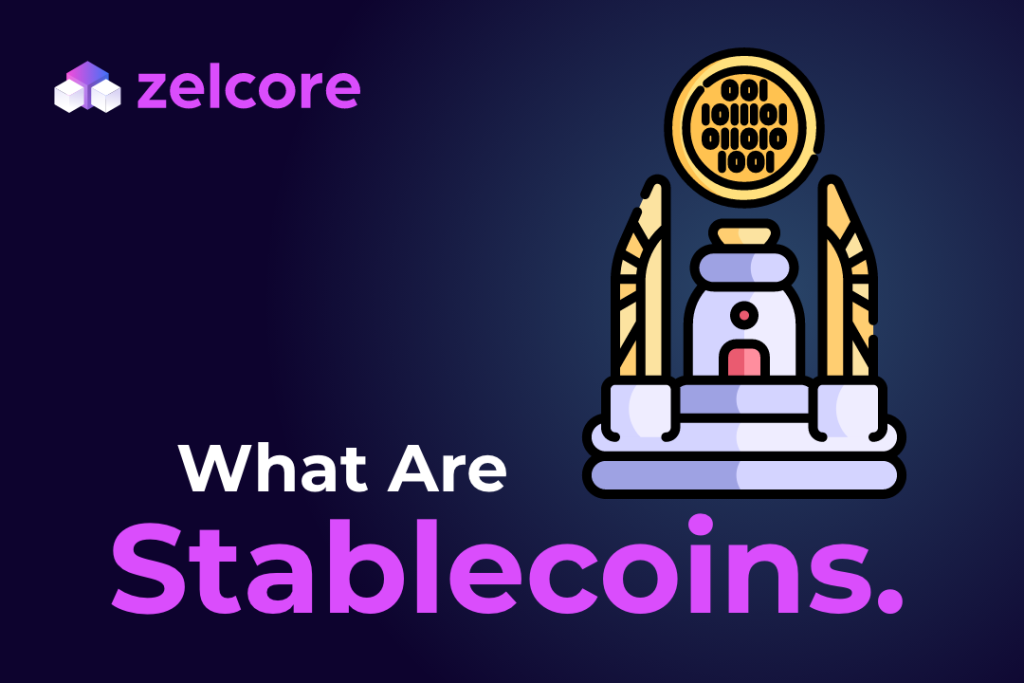One of the main characteristics of cryptocurrencies is that they are highly volatile financial assets, whose price is known to dramatically fluctuate. Well-established cryptocurrencies such as Bitcoin (BTC), Ethereum (ETH), and other high market cap altcoins are known to fluctuate a few percent up or down within a single day, but are less popular cryptocurrencies can change even several tens of percent within 24 hours.
High volatility makes investing in cryptocurrency very risky, but there’s a whole class of cryptocurrencies, called stablecoins which are immune to volatility because they are tied to the value of a certain asset such as the US dollar, making one stablecoin unit worth one USD at all times.
Let’s take a look at how stablecoins work.
How do Stablecoins Work?
In order to be immune to the volatility of the crypto market, stablecoins need to be systematically tied to the value of a relatively stable asset such as USD or other fiat currencies, through a process called collateralization. This means that the company that issues a stablecoin guarantees the stable value of their coin by keeping the same number of real-world assets, fiat money in their reserve bank account, corresponding with the amount of their stablecoin available on the market. This way, in order to mint new coins, the stablecoin issuer needs to first add an appropriate amount of fiat money to their treasury. These are fiat-collateralized stablecoins.
Crypto-collateralized stablecoins on the other hand are collateralized with cryptocurrencies such as BTC, ETH, and other coins, but for their price to stay stable, the company that issues these coins needs to keep considerably more cryptos in their treasury than the USD value of their stablecoin, to compensate for crypto volatility.
Algorithmic stablecoins are different from other stablecoins. Instead of directly being tied to a fiat currency or cryptocurrency, they use smart contracts to regulate the supply of circulating coins, in order to keep the value of the coin stable and avoid volatility. These stablecoins are closely tied to dynamic crypto treasuries which are regulated by smart contracts.
Why Are Stablecoins Important?
Stablecoins are a very important crypto asset class because they enable crypto holders to quickly take profits from trading by converting a portion of their profits into a non-volatile cryptocurrency whose value never changes.
For example, if you managed to gain some considerable profits due to high Dogecoin (DOGE) volatility, you might also lose those profits very quickly when the price drops, but if you convert the profit into a stablecoin, you’ll have some safe gains that are tied to US dollar value.
Additionally, when you keep some stablecoins in your portfolio, you’re ready to instantly invest funds in other volatile cryptos, without the need for buying crypto with fiat money through a slow bank transfer or debit card transaction.
Most Popular Stablecoins
There’s a lot of stablecoins on the crypto market, but only a handful of these assets have managed to gain widespread popularity and a huge market cap.
Tether (USDT)
Tether (USDT) is the first stablecoin on the crypto market. It was launched back in 2014 and soon after its launch, Tether was recognized as a highly valuable asset for crypto traders and holders who want to leave a portion of their crypto holdings in a stable form that corresponds with the value of the US dollar.
Tether is fiat-collateralized and it’s available on many of the most popular blockchains such as ETH, Tron (TRX), BTC, Eos (EOS), and Algorand (ALGO).
Binance USD (BUSD)
Binance USD is another highly popular fiat-collateralized stablecoin, launched by Binance, one of the largest crypto exchange platforms in the world. BUSD is licensed to operate by the New York State Department of Financial Services (NYDFS), which is one of the most strict financial departments in the world. Also, BUSD undergoes regular monthly audits and their audit reports are publicly available for viewing.
The coin is issued as an ERC20 Ethereum token, compatible with the Binance Chain (BEP-2) and the Binance Smart Chain (BEP-20).
Dai (DAI)
DAI is an innovative, algorithmic stablecoin powered by smart contracts on the Ethereum blockchain, that make sure the value of each DAI coin is tied to the value of the US dollar. Maker DAO is the company that operates the DAI stablecoin. The smart contracts behind DAi operate by depositing a variety of cryptocurrencies in smart contract vaults that ensure all of the newly minted DAI coins are sufficiently collateralized.
Conclusion
Stablecoins are a very important asset class among cryptocurrencies because they provide some much-needed safety in an otherwise very unstable market environment. Crypto traders don’t need to directly cash out their crypto gains into fiat money, because they can safely keep their profits in the form of stablecoins, without worrying about unexpected price changes.
